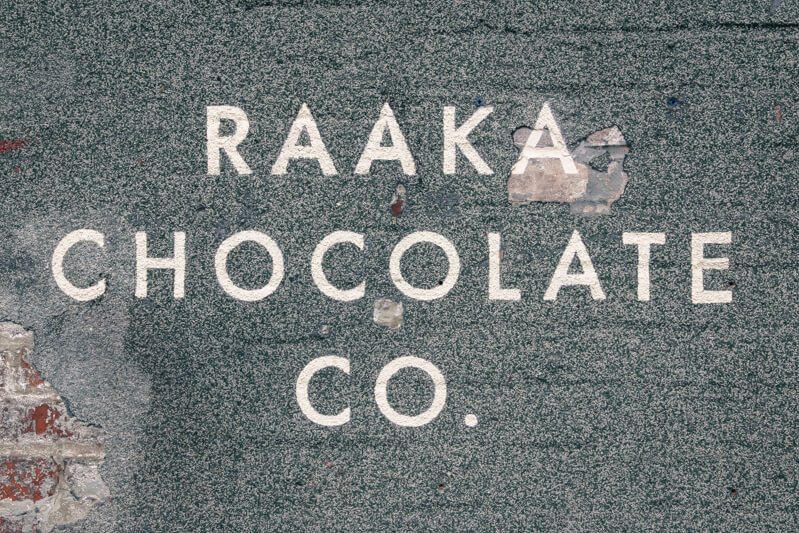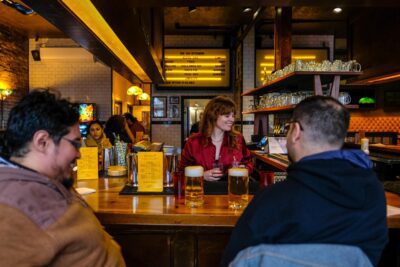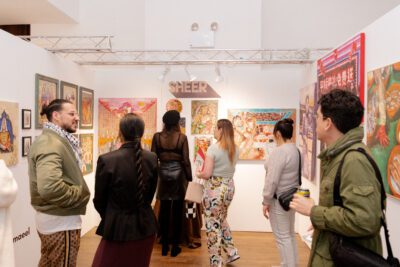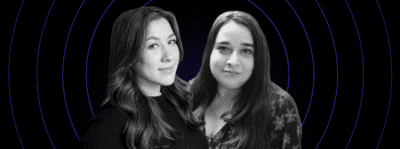Raaka Chocolate Moves to Red Hook, Finds Yet Another Use for Whiskey Barrels
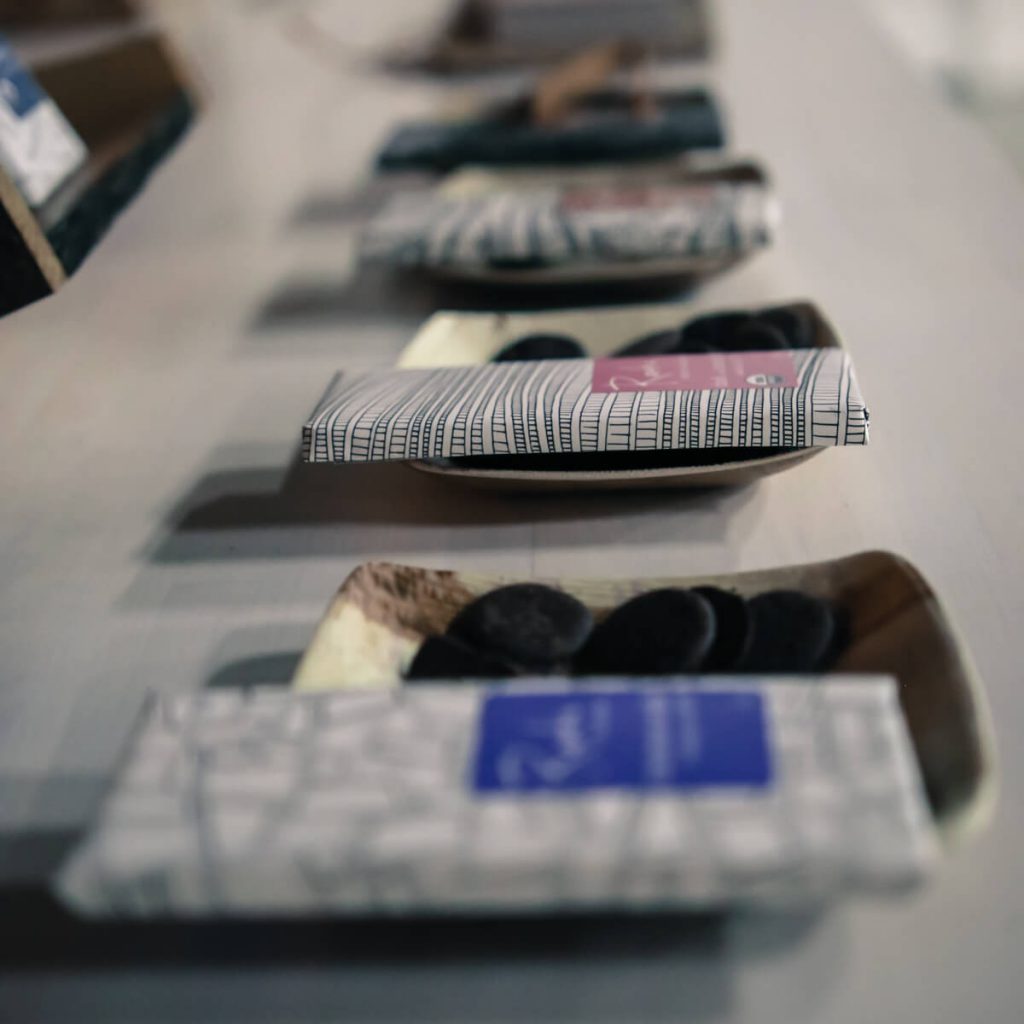
When Ryan Cheney, founder of Raaka Chocolate, opened the company’s original Clinton Hill factory in 2010, he did so with the intention of making small-batch chocolate bars from unroasted cocoa beans while also remaining conscious of environmental and humanitarian factors. Their product is certified organic, made from cocoa beans sourced directly from sustainable farms, and, if that weren’t enough, it’s all soy-free, gluten-free, nut-free, and vegan-friendly. It’s also crazy delicious. Raaka won a Good Food Award in 2013 and received a deluge of positive press. All of this left them growing at a faster rate than their humble space could accommodate.
And so last month they opened up their brand new factory in Red Hook (64 Seabring St.), which is nearly four times the size of their Clinton Hill space, and will house all production facilities, plus a performance space and a retail operation. We spoke to Cheney about how their new neighborhood, their ties to the worlds of beer and spirits, and much more.


So, tell us about the new space. I can’t imagine it’s very easy finding so much available space at a price that’s affordable for a relatively small company like Raaka. Was it a difficult process?
Yeah, price is certainly one of the major driving factors in terms of where we looked. We needed something a little bigger with substantial power. We looked in Red Hook and Brooklyn Park and Industry City and a number of other spots around Brooklyn. We even drove up to, like, Westchester and Cherrytown to decide if we wanted to be more of a destination, and then we looked at some massive buildings that needed a lot of changes to the interior. In the end, we liked Red Hook because it was closer to everything we had done initially. We started in Clinton Hill, and we ultimately wanted to stay in Brooklyn.
Were there any other neighborhoods you were really eyeing?
Of course we would have loved, in a dream scenario, to open a beautiful space in Manhattan or a really prime area of Brooklyn, but we almost got a spot on 2nd Street in Gowanus, just north of Brooklyn Whole Foods, not far from Park Slope. That was actually our first choice, but it was a really tentative availability and really unclear. They used it for shooting The Americans, the show on FX, and they weren’t sure if they were going to renew the show or not. If they renewed the show we wouldn’t get the space, but if they didn’t renew the show then we would, so we were in this weird limbo for months waiting for a definitive answer and hoping we could get the space. Eventually, we just wanted to sign on something ,so we found the space we are at now.


A giant vat of insanely awesome looking liquid chocolate.
Red Hook seems like a place that has a lot of pros and cons naturally built in. What about it works for you? What are the challenges it presents?
I think one of the things that works for us since we’re in the north end of Red Hook, a little away from the shopping area, so we can give more attention to customers than we could if we were in a space with a lot of foot traffic. It’s almost like we have a different kind of model where people who really want to see what it’s like for chocolate to be made have have a slightly higher hurdle to get to Red Hook, but once they get there it will be a more personal experience than it would be in a bustling area.
Challenges, obviously there’s a background fear, after super storm Sandy, which had a substantial impact in Red Hook, but part of entrepreneurship is confronting risk and being willing to have an appetite for walking into a space your’e unfamiliar with. We’re just trying to be smart and hope that with flood insurance and proper preparation that if there is ever another problem with a big storm we’ll be prepared.


Retail display. So nice. Want it all.
What are your hopes for the retail side of the business? Do you see it being a large component of what you do, or just something to complement the wholesale business?
Yeah, it’s totally something we want to grow. We’ve been open for a couple weeks now and we’re getting daily visitors, which is nice. We’re using our tours and classes as an attempt to get people out to the space and know more about it, but also we’re doing events. We’re bringing other businesses into the factories to do things like pairings, like delicious craft beer and chocolate pairings. We’re also doing school field trips.
Can you talk a little about the space itself and the types of events you might be able to host there? I know you’ve talked about offering chocolate making classes?
The thing I like about the space is it’s really open like it has 27-foot ceilings, so it’s more spacious then most of the things that are available in the more dense retail spaces in the city and in Brooklyn, so that’s nice. In terms of classes, we walk through the process starting at the cocoa farms from which we source our beans and go all the way through to the wrapping the bars. In the classes we let folks load a little table-top grinder to get a sense of what’s happening on a small scale and watch the texture and flavors develop. It’s all really hands on. We wanted it to be hands-on because that’s really part of the fun is to interact with the chocolate.
About the chocolate itself, what does it mean for the taste of your bars that you don’t roast the beans? Can you describe the type of flavor that process—or lack thereof—imparts?
In general, we tend to have fruity character that is bolder and closer to wine. There are more high notes, but often times when you roast chocolate it gets less bright. I would say its a little bit bolder, a little bit wilder and often times presenting more a wine like character.


Bourbon barrels, for making everyhing better.
I also wanted to talk specifically about the chocolate you make with beans that have been aged in bourbon barrels. Where did that idea come from, and can you explain what effect it has on the finished product?
We work with Berkshire Mountain Distillers. They age the bourbon in charred oak barrels, then we buy their barrels. If you look at the history of perfuming, one way to get aromas out of flowers is if you use oil. Old world perfumers will take jasmine flowers, for example, and submerge them in oil, and the scent will get passed from the flower to the oil and then they’ll later still and purify that essence from the oil to get the essence. It’s kind of the same with the barrels. The barrels have strong scents in them and the cocoa beans themselves naturally have cocoa butter in them, so that the oil is sensitive to its aromatic environment. Like a sponge, they’ll pull in aroma. So we literally just hand-funnel cocoa nibs into the barrels, cork them and store them for 4-6 weeks, and they pull the aroma from the barrels into the chocolate.
Nate Hodge, our head chocolate maker, is also into cooking in general and when we started, we were doing experiments in his apartment, and we were buying individual bags of beans, like 150 pound bags. One of the bags was sitting in his kitchen when he was making barbecue sauce, so he was like reducing vinegar and a whole bunch of spices in a giant pot and letting it simmer for like 12 hours or something like that, so the whole apartment smelled like barbecue sauce for several days. We had no idea at the time it would affect the flavor of the beans which were just sitting in a burlap sack on a table in the room. well later we made those beans to make chocolate and we were like this chocolate tastes crazy! But we didn’t like the flavor, so we kept reaching out to all of these chocolate makers being like why do our beans taste like this? After two weeks of talking to people, we talked to one chocolate maker that was like “Well, have they been around anything that’s smelled really strongly?” And the bourbon thing didn’t come about until maybe a year later, and it’s been one of our best sellers since.
Barrel-aging is also a big trend in craft beer—I know you guys made a chocolate that was modeled after a style of beer, the porter. How did that come about? Is the craft beer world one that you find yourselves drawn to and interested in exploring further?
Nate led a bunch of our flavor development and he’s a big beer lover. He used to work at Ithaca Brewery giving tours, and between the bourbon bar being so well received and Nate’s love of beer, we were like, hey we should see how close we can get by bringing inspiration from malt and hops, etc.
What are some of your favorite independently owned Brooklyn businesses that you believe are doing innovative work in their chosen field?
By Brooklyn, they’re a shop that sells only Brooklyn made products, and the cool thing is it really is a relationship. Nate plays shuffle board with their team weekly. We make products together with them too. Last holiday season, we made a vegan toffee bar that they sold with chili and vegan toffee. They’re helping young companies and artists and artisans have a platform for selling things.
I would also say we’re friends with the folks at Runa Tea. They do interesting things, like they bring in guayusa, which is this tea from the Amazon that’s unique. And they’re friendly.
Susty Party does all compostable bio-degradable tableware, like plates and forks for parties that are environmentally friendly.


What kind of plans do you have for Raaka over the next year?
I think one of the biggest components is developing community. We’re just bringing folks into the factory for the first time, so I definitely want to have awesome, joyful long-lasting relationship with other food makers in Brooklyn and folks that live in the neighborhoods and make the factory a place that people come to enjoy themselves. I think we have the opportunity to be the friendliest and most personable chocolate factory. I think it should be a fun experience and teaching is part of that.
Also, chocolate is a pretty well established market, so we’re trying to look for innovative ways to make chocolate and not do the same thing as everyone else. One the things we’re doing is this subscription plan that sends two completely unique limited-addition bars to people’s door steps every month. This month, Nate made a ghost-pepper bar and coffee bar with coconut milk, and those two bars will go out with one from our normal line up. We’re finding that people have been having really good responses online and that they’re really excited to get something different every month. For me, that’s an interesting thing to see how much we can build that up and get more people excited about getting something new and different each month.
You might also like 










